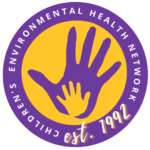Eco-Healthy’s Message is in Demand!
kristiet_a0o04rjz
on
June 18, 2020
Eco-Healthy’s Message is in Demand!
By Kathy Attar, Engagement Manager, Eco-Healthy Child Care®
In May, we presented our eco-healthy curriculum for the first time to child care providers and other child care professionals via a new partnership with the National Center on Early Childhood Health and Wellness. The Center targets child care programs serving high-risk, low-income children from birth to age 5, as well as pregnant women.
The Center is a collaboration of the American Academy of Pediatrics, the Georgetown University Center for Child and Human Development, National Maternal and Child Oral Health Resource Center, Education Development Center, Inc., and Health Care Institute at the University of California, Los Angeles and is jointly administered by the Administration for Children and Families, Office of Head Start in partnership with the Office of Child Care.
The overwhelming interest from child care professionals in how to create and maintain healthier and eco-friendly child care settings is apparent! We had over 7,000 folks register for the May webinar. The webinar was recorded–please check it out and share widely with your networks!
Reaching child care providers who serve low-income communities and communities of color is a priority for the Eco-Healthy Child Care® program. We know that health disparities exist–-rates of asthma, obesity, childhood cancer and certain learning disabilities are higher amongst poorer children and children of color. The science linking poor health to exposure to environmental hazards is strong and continues to grow. The data also shows that underserved and at-risk populations have greater exposures to environmental hazards like dirty air, unsafe water and harmful chemicals in consumer products.
Greatly reducing exposures to known environmental hazards within early learning settings can help protect the health of our most vulnerable children. Increasing awareness amongst child care providers about the link between unsafe plastics, pesticides and harmful chemicals found in cleaning supplies is a first step towards changing practices and creating safer child care settings.
Eco-Healthy Child Care® has played a key role in incorporating environmental health and safety best practices into the National Resource Center for Health and Safety in Child Care and Early Education (NRC) Caring for Our Children (CFOC) standards. EHCC seeks to also partner with the Administration for Children and Families, Office of Head Start to change child care guidelines within Head Start and Early Head Start programs. Incorporating environmental health best practices from our eco-healthy checklist into these guidelines will create longer-term and farther-reaching change for some of our nation’s most vulnerable children.
Are you wanting to increase your knowledge and awareness of eco-healthy best practices? Check out our free Fact-Sheets, FAQs and Checklist!






